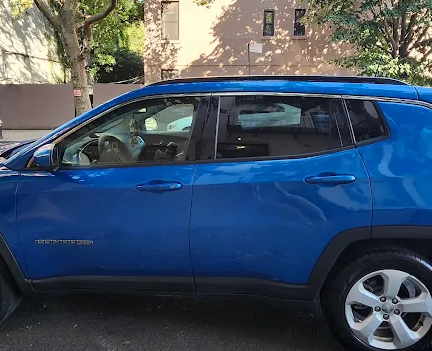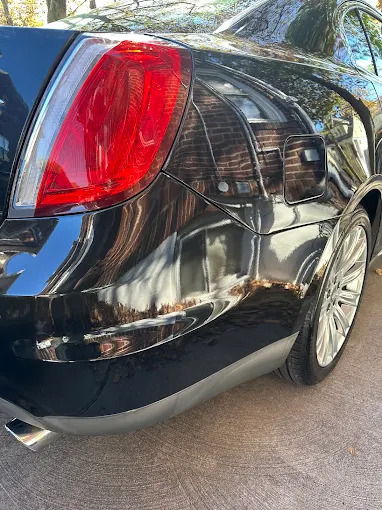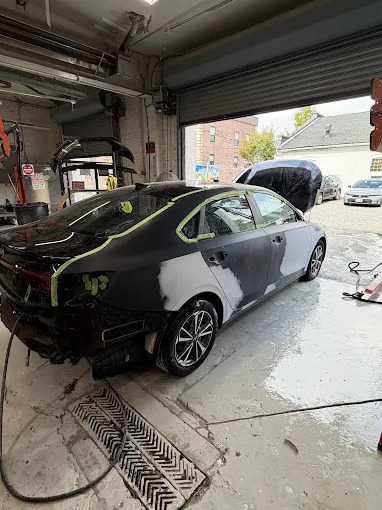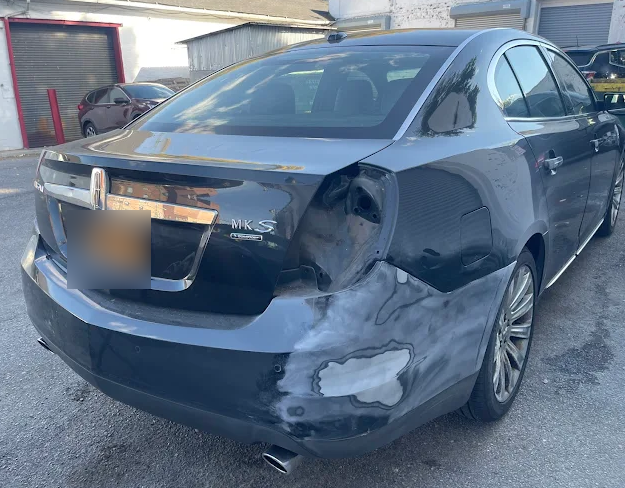Introduction to Collision Repair
Repairing a car after a crash isn’t just about looks—it’s about safety, value, and getting back on the road with confidence. Modern collision repair uses factory-approved equipment, skilled technicians, and strict quality checks. Local laws in places like Texas and Ontario require certified shops to meet high standards, so your ride’s not just patched up—it’s truly restored.
Why Repair Quality Matters
A quality repair means more than fresh paint—it ensures alignment, airbag function, and structural strength. In fact, insurance companies and the National Highway Traffic Safety Administration recommend using certified techs for bumper, frame, and sensor repairs to guarantee the best outcomes.
What are the Common Types of Damage Repaired After a Collision?
Car accidents can mess up everything from tiny moldings to major engine supports—but shops have special fixes for each type. They sort repairs by body damage, hidden mechanical issues, and high-tech electronic needs.
Defining Repair Categories
Repairs break down into dents/dings, scratches/paint issues, bumper damage, glass repairs, frame straightening, panel swaps, suspension checks, wiring fixes, and more. Some problems are plain to see; others need expert eyes and fancy tools.

Dent and Ding Damage
Hail, carts, or minor crashes cause dings all the time. Paintless Dent Repair (PDR) uses rods and gentle pushes from behind to pop out shallow dents without wrecking your car’s paint. Deeper dents get filler, sanding, and paint for a smooth look.
Paintless Dent Repair vs Traditional Fill
PDR is quick, eco-friendly, and cheap, but doesn’t work for sharp creases or damaged paint. Traditional repairs use body fillers, sanding, and painting to hide tough spots.
Scratch and Paint Damage
A good paint job protects more than just your car’s image—it shields metal from rust. Spot repairs fix small chips, while large scrapes often need sanding, multiple coats of paint, and a clear finish with computerized color matching.
Touch-Ups vs Full-Panel Repaint
Paint pens and brushes handle minor chips. But when scratches run deep, full-panel resprays create a unified shine that matches factory color and gloss.
Bumper and Fascia Damage
Bumpers take the first hit in almost any collision. Plastic welding glues splits for light damage, but heavy cracks usually mean a bumper swap. In 2025, many shops use OEM bumpers to keep warranty and crash ratings intact.
Plastic Welding and Replacement
Plastic welding fuses small splits, saving money and time. Big breaks, sensor mounts, or distorted shapes require a new bumper fitted by specialists.
Glass and Lighting Damage
Broken headlights, taillights, and glass pose safety risks and legal headaches. Technicians use factory-grade glass and bulbs, sealing everything to keep water and dust out. Adjustments restore noticeability and auto-dimming features.
OEM Glass Installation
OEM glass preserves the strength and sensor placement needed for ADAS safety tech; generic glass might not work with rain sensors or lane cameras.
Frame and Structural Damage
Heavy impacts bend frames, risking steering problems and weak crash zones. Shops use hydraulic frame racks, lasers, and jigs to straighten metal until all specs match computer models.
Computerized Frame Straightening
Lasers and computers check alignment before and after pulling the frame, so wheels, doors, and structure line up perfectly.
Unibody Alignment and Chassis
Unibody vehicles blend the body and frame. Techs use alignment machines to measure rocker panels, suspension mounts, and more—fixing any hidden twists and restoring crash protection.
Laser Alignment Techniques
Laser benches shoot beams at reference points, highlighting misalignments in minutes. Repairs make sure your car steers straight and airbags deploy safely.

Body Panel Replacement
Major dents or tears need panel swaps. Shops order OEM doors, fenders, or hoods, sand and paint them, then fit everything snugly, blending edges and molding for a seamless look.
OEM Panel Swap-Outs
Panels straight from automakers guarantee a perfect fit and safety. After prepping and painting, techs check for flush gaps and color matching.
Suspension and Wheel Alignment
Collisions bend suspension parts, making tires wear out fast and steering wobble. Techs swap broken arms or struts, then use computers for a four-wheel alignment, restoring smooth driving and safe turning.
Control Arm and Strut Repairs
Damaged suspension means unstable rides. Replacing bent struts and arms brings back safe handling and comfort.
Electrical and Sensor Damage
Modern cars rely on computers for airbags, cameras, reminders, and more. Collisions mess with wiring and sensor readings—fixes include soldering wires, swapping sensors, and recalibrating ADAS systems for lane-keeping and auto-braking.
ADAS Calibration and Wiring Fixes
Technicians use special boards, targets, and scan tools to zero in cameras and radars. Faulty wiring gets repaired with OEM-grade harnesses, protecting high-tech features.
Rust and Corrosion Treatment
Exposed metal rusts quickly. Good body shops treat bare spots, spray epoxy primer, paint over, and finish with undercoating to block water, salt, and grime. This keeps your car solid for years to come.
Undercoating and Sealants
Extra undercoating and sealants guard against future rust, especially in snowy or coastal regions.
Trim and Molding Repair
Bumps and scrapes tear off moldings and badges. Technicians weld plastic, buff chrome, and use original clips or emblems—so trims look sharp and stay put.
Plastic Mold Restoration
Plastic moldings are reshaped by heat and glue or swapped for fresh ones. Chrome trims get polished for a like-new shine.
Severe Collision Restoration
Big wrecks damage crumple zones, floor pans, or torque boxes—critical for absorbing energy. Shops use advanced welding and factory schematics, rebuilding or replacing parts to keep passengers safe.
Torque-Box Welding and Fabrication
Welding torque boxes and frame mounts demands advanced training. Shops follow OEM blueprints for best safety and resale value.
When Is a Total Loss?
If the fix costs more than the car’s value, insurers call it a “total loss,” paying out the market price instead of repairs. This often happens with major frame, engine, or flood damage.
Insurance Evaluation Criteria
Actual cash value minus what it’ll cost to restore decides total loss status. Local laws set the cutoff, ranging from 65% to 80% of the value.

How to Choose a Repair Shop
Search for OEM approval, I-CAR Gold Class status, and strong warranty coverage. Local brands like Caliber Collision and smaller certified shops provide top service, transparent pricing, and peace of mind.
Certified Technicians and Warranties
Certified techs follow strict protocols, offer multi-year warranties, and ensure ADAS recalibrations meet government and automaker standards.
FAQs
What are the most common types of collision damage?
Common collision damage includes dents and dings, paint scratches and chips, bumper and fascia cracks, broken glass and lighting, frame and unibody misalignments, body panel deformation, suspension and wheel misalignment, and electrical or sensor faults.
How does paintless dent repair work after an accident?
Paintless Dent Repair (PDR) uses specialized metal rods inserted behind the damaged panel to gently massage dents out, preserving the factory paint and clear coat without fillers or repainting.
Can cracked bumpers always be repaired, or do they need replacement?
Small bumper cracks and splits can often be fixed via plastic welding and filling, but severe breaks—especially around sensor mounts—usually require full OEM bumper replacement for safety and fitment.
Why should I choose OEM glass and panels for my repair?
OEM glass maintains windshield strength and proper sensor placement for ADAS features, while factory panels ensure exact fit, weld points, and matching paint color, preserving safety and resale value.
How do shops fix electronic and sensor damage after a crash?
Technicians use diagnostic scanners to locate wiring harness faults, then repair or replace damaged connectors and recalibrate ADAS cameras, radar, and airbag modules to factory specifications using precision targets.
What’s the difference between rust treatment and undercoating?
Rust treatment involves applying converters and epoxy primers to halt existing corrosion on bare metal, whereas undercoating adds a protective rubberized layer to wheel wells and chassis to prevent future rust from moisture and road salt.
Can a collision repair shop restore severe frame damage?
Yes, certified shops employ computerized frame-straightening racks with hydraulic pullers and laser measurement systems to realign bent rails and unibody sections back to factory CAD tolerances, followed by structural welding where needed.
Conclusion
A high-quality collision repair restores not only your vehicle’s appearance but its safety, structural integrity, and resale value by following a thorough process that includes assessment, structural and mechanical repairs, panel replacement, paint refinishing, ADAS calibration, and rigorous final quality assurance checks. Ensuring your repair shop uses OEM parts, certified technicians, and computerized alignment and calibration equipment helps guarantee that every dent, scratch, bumper crack, and sensor fault is fixed to factory standards, giving you confidence and peace of mind on the road.
